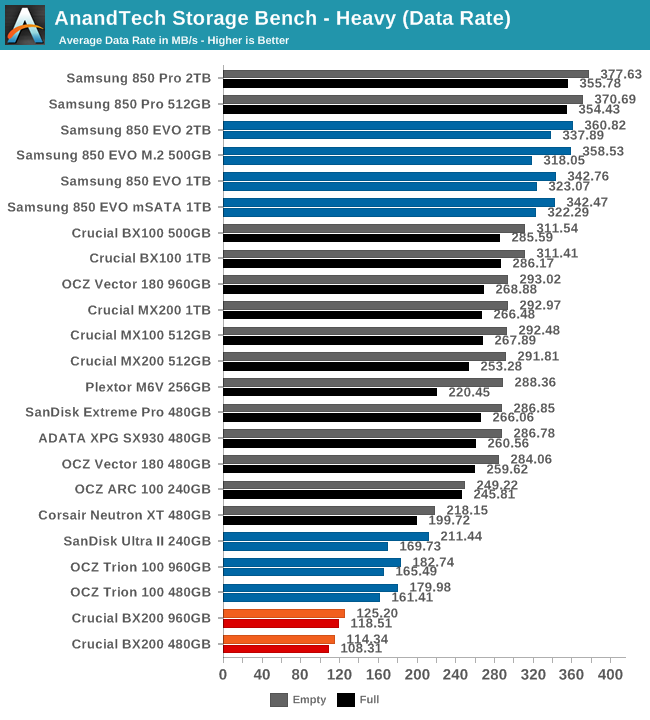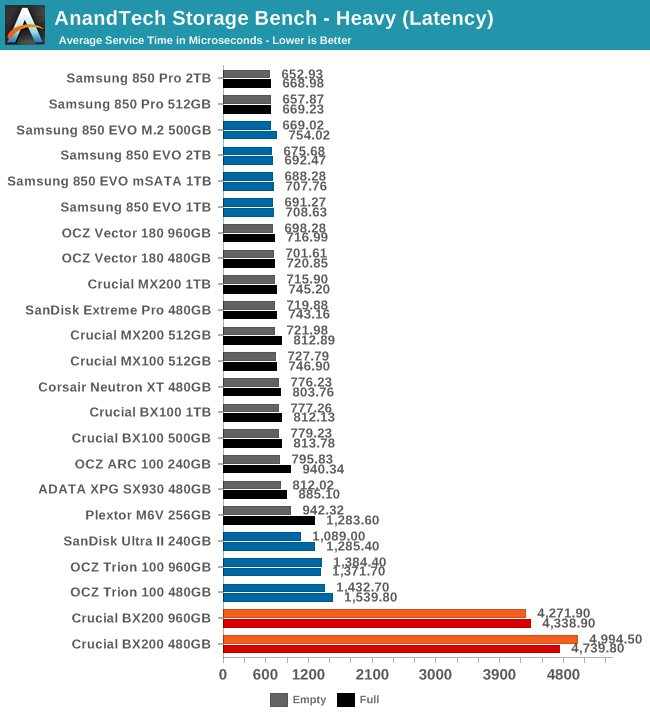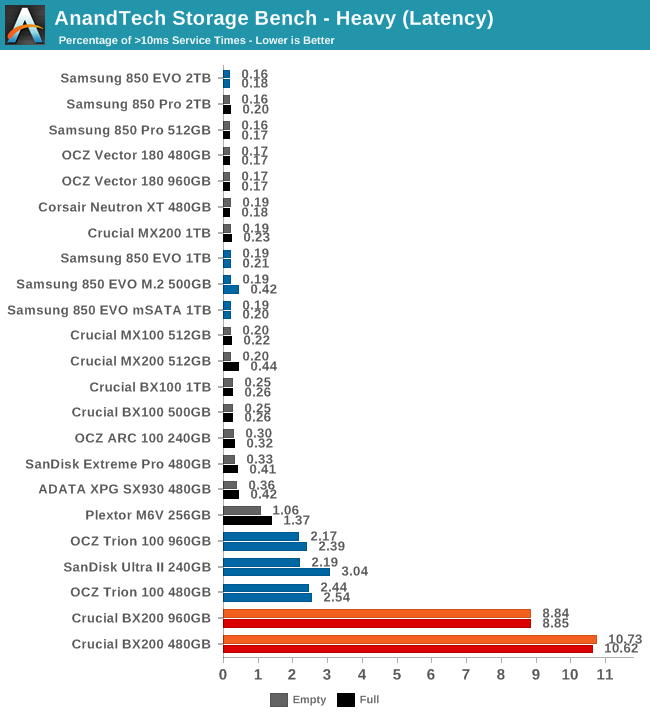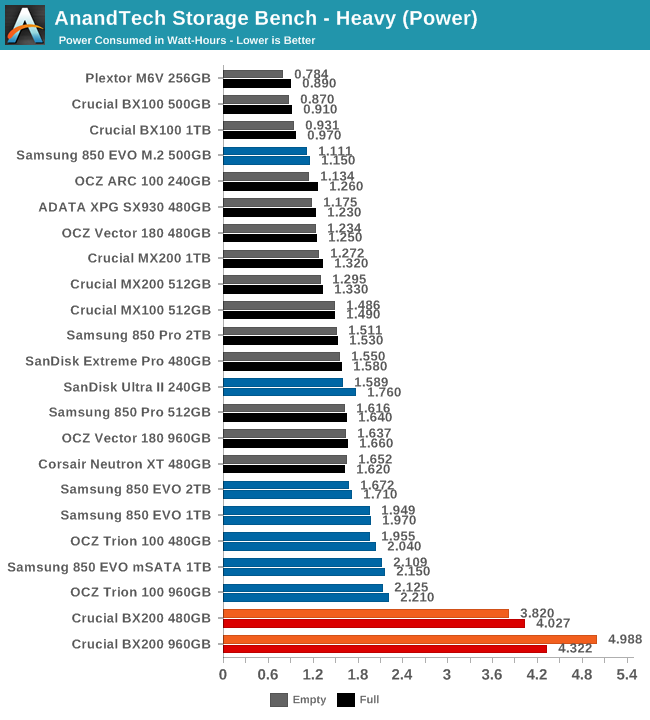The Crucial BX200 (480GB & 960GB) SSD Review: Crucial's First TLC NAND SSD
by Billy Tallis on November 3, 2015 9:00 AM ESTAnandTech Storage Bench - Heavy
Our Heavy storage benchmark is proportionately more write-heavy than The Destroyer, but much shorter overall. The total writes in the Heavy test aren't enough to fill the drive, so performance should never drop all the way down to the steady state. This test is far more representative of a power user's day to day usage, and is heavily influenced by the drive's peak performance. The Heavy workload test details can be found here.

The higher proportion of writes on the Heavy test as compared with The Destroyer sends the BX200 to the bottom of the chart. The difference in performance between running the Heavy test on a freshly-erased drive and a completely full drive is atypically small, showing that the poor performance cannot be due to a mere lack of sufficient overprovisioning.

Until the BX200 came along, there wasn't much spread among SATA drive for average service time. The painful write performance shows up very clearly here.

With 8.8% and 10.7% of operations taking more than 10ms to complete, the BX200 will clearly be noticeably slower than most modern SSDs under moderate and heavy load.

Power consumption is once again dismal, as the drive is apparently spending way too much of its time on its relatively ineffective garbage collection.










85 Comments
View All Comments
ilkhan - Tuesday, November 3, 2015 - link
If a company is going to shoot for the value proposition, they really need to beat samsung by more than 10%. Paying an extra 10% to get a really solid drive like the 850EVO is just too tempting for anyone who does even the tiniest of research before buying.You either need to be the cheapest, best name brand recognition, or fastest. Crucial isn't any of those on the 250GB market.
AnnonymousCoward - Friday, November 6, 2015 - link
Crucial has better quality and is a U.S. company. You shouldn't give Samung so much credit.squngy - Thursday, November 26, 2015 - link
What does the county of the home office got to do with anything?Samus - Friday, February 19, 2016 - link
Support. Samsungs is a joke. Fortunately the 840 Evo is the only drive they've botched. Crucial has excellent support and an excellent track record to go with their products. Shows good QA. Wouldn't expect anything else from an Intel subsidiary.zeeBomb - Tuesday, November 3, 2015 - link
What's the difference between TLC NAND to MLC or SLC NAND again?Beararam - Tuesday, November 3, 2015 - link
http://www.tomsitpro.com/articles/flash-data-cente...dakishimesan - Tuesday, November 3, 2015 - link
http://www.anandtech.com/show/6337/samsung-ssd-840...coconutboy - Tuesday, November 3, 2015 - link
slc = premium, reliable, fast, expensive, etcmlc = middle ground
tlc = cheap, lowest reliability, but Samsung has gotten tlc quality up to a level sufficient for most non-enterprise users
https://en.m.wikipedia.org/wiki/Multi-level_cell
zeeBomb - Tuesday, November 3, 2015 - link
Okay awesome, thanks.FalcomPSX - Tuesday, November 3, 2015 - link
SLC NAND stores one bit per flash cell. MLC stores two bits per cell. and TLC stores three bits per cell.